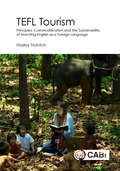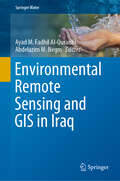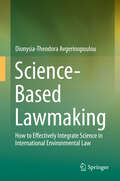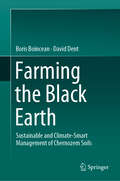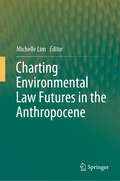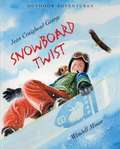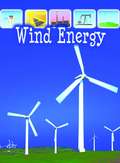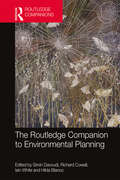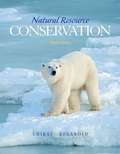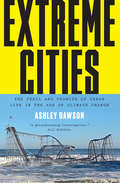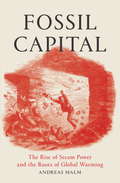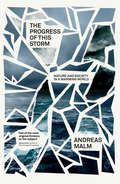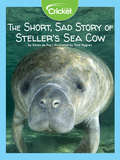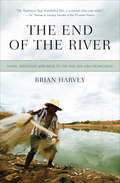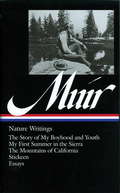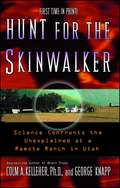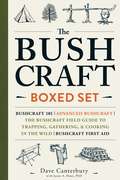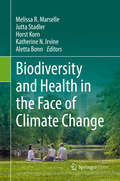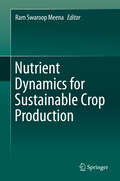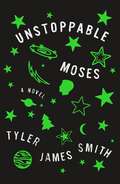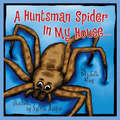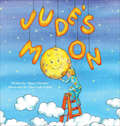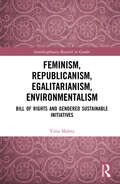- Table View
- List View
TEFL Tourism: Principles, Commodification and the Sustainability of Teaching English as a Foreign Language
by Hayley StaintonThere is evident lineage between the concepts of teaching English as a foreign language (TEFL) and tourism, represented through evocative marketing material, the commoditisation of the TEFL product, teacher motivations and experiences. Yet, to date there has been no recognition of these links within industry or academia. This book introduces the concept of 'TEFL tourism', outlining the scale of the sector and the rapid commercialization of TEFL teaching across the world, locating it as an emerging form of niche tourism. The text outlines the organisation types and geographical locations, emphasizing the commodification of English language teaching. It also outlines the types of TEFL tourists, the complexities of international education, links with various tourism forms and sustainability considerations of the industry. Key features include: - The first book of its kind - Case studies throughout add context to the theoretical presentation of the industry - Presents relevant industry statistics - Addresses sustainability and stakeholders. The book will appeal to tourism academics and students, in particular those with interests in educational and volunteer tourism as well as sustainable tourism and commodification.
Environmental Remote Sensing and GIS in Iraq (Springer Water)
by Ayad M. Fadhil Al-Quraishi Abdelazim M. NegmThis unique book focuses on remote sensing (RS) and geographical information systems (GIS) in Iraq. The environmental applications include monitoring and mapping soil salinity and prediction of soil properties, monitoring and mapping of land threats, proximal sensing for soil monitoring and soil fertility, spatiotemporal land use/cover, agricultural drought monitoring, hydrological applications including spatial rainfall distribution, surface runoff and drought control, geo-morphometric analysis and flood simulation, hydrologic and hydraulic modelling and the effective management of water resources. Also, this book assesses the impacts of climate change on natural resources using both RS and GIS, as well as other applications, covering different parts of Iraq. The book chapters include tens of maps extracted from the remotely sensed datasets, in addition to tables and statistical relations obtained from the results of the studies of the chapters' authors. These studies have been conducted in different parts of Iraq; in the north (Kurdistan region) with its mountainous and undulating lands, in western parts which have desert soils, and in central and southern Iraq where there are salty soils, dunes, wetlands, and marshes.The book is written by distinguished scientists from Iraq, China, USA, Italy, Iran, Germany, and the Czech Republic who are interested in the Iraqi environment. The book is therefore a useful source of information and knowledge on Iraqi environment for graduate students, researchers, policy planners, and stakeholders in Iraq as well as similar regions.
Science-Based Lawmaking: How to Effectively Integrate Science in International Environmental Law
by Dionysia-Theodora AvgerinopoulouThe Book takes the approach of a critique of the prevailing international environmental law-making processes and their systemic shortcomings. It aims to partly redesign the current international environmental law-making system in order to promote further legislation and more effectively protect the natural environment and public health. Through case studies and doctrinal analyses, an array of initial questions guides the reader through a variety of factors influencing the development of International Environmental Law. After a historical analysis, commencing from the Platonic philosophy up to present, the Book holds that some of the most decisive factors that could create an optimized law-making framework include, among others: progressive voting processes, science-based secondary international environmental legislation, new procedural rules, that enhance the participation in the law-making process by both experts and the public and also review the implementation, compliance and validity of the science-base of the laws. The international community should develop new law-making procedures that include expert opinion. Current scientific uncertainties can be resolved either by policy choices or by referring to the so-called „sound science.“ In formulating a new framework for environmental lawmaking processes, it is essential to re-shape the rules of procedure, so that experts have greater participation in those, in order to improve the quality of International Environmental Law faster than the traditional processes that mainly embrace political priorities generated by the States. Science serves as one of the main tools that will create the next generation of International Environmental Law and help the world transition to a smart, inclusive, sustainable future.
Farming the Black Earth: Sustainable and Climate-Smart Management of Chernozem Soils (International Year Of Planet Earth Ser.)
by Boris Boincean David Dent'This book deals with the sustainability of agriculture on the Black Earth by drawing on data from long-term field experiments. It emphasises the opportunities for greater food and water security at local and regional levels.The Black Earth, Chernozem in Russian, is the best arable soil in the world and the breadbasket of Europe and North America. It was the focus of scientific study at the very beginnings of soil science in the late 19th century—as a world in itself, created by the roots of the steppe grasses building a water-stable granular structure that holds plentiful water, allows rapid infiltration of rain and snow melt, and free drainage of any surplus.Under the onslaught of industrial farming, Chernozem have undergone profound but largely unnoticed changes with far-reaching consequences—to the point that agriculture on Chernozem is no longer sustainable. The effects of agricultural practices on global warming, the diversion of rainfall away from replenishment of water resources to destructive runoff, and the pollution of streams and groundwater are all pressing issues. Sustainability absolutely requires that these consequences be arrested.
Charting Environmental Law Futures in the Anthropocene
by Michelle LimThis book explores a range of plausible futures for environmental law in the new era of the Earth’s history: the Anthropocene. The book discusses multiple contemporary and future challenges facing the planet and humanity. It examines the relationship between environmental law and the Anthropocene at governance scales from the global to the local. The breadth of issues and jurisdictions covered by the book, its forward-looking nature, and the unique generational perspective of the contributing authors means that this publication appeals to a wide audience from specialist academics and policy-makers to a broader lay readership.
Snowboard Twist (Outdoor adventures)
by Wendell Minor; Jean Craighead GeorgeWhile Axel, his father, Dag, and his dog, Grits, are testing the snow in the Teton Mountains' Glory Bowl, Axel and his snowboarding rival, Kelly, witness an avalanche.
Wind Energy (Let's Explore Global Energy)
by David Armentrout Patricia ArmentroutIntroduces methods of obtaining power from the wind, places wind power in context with other power resources, explains how it works, and considers the advantages and disadvantages of its possible future use.
The Routledge Companion to Environmental Planning (Routledge International Handbooks)
by Simin Davoudi Richard Cowell Iain White Hilda BlancoThis Companion presents a distinctive approach to environmental planning by: situating the debate in its social, cultural, political and institutional context; being attentive to depth and breadth of discussions; providing up-to-date accounts of the contemporary practices in environmental planning and their changes over time; adopting multiple theoretical and analytical lenses and different disciplinary approaches; and drawing on knowledge and expertise of a wide range of leading international scholars from across the social science disciplines and beyond. It aims to provide critical reviews of the state-of-the-art theoretical and practical approaches as well as empirical knowledge and understandings of environmental planning; encourage dialogue across disciplines and national policy contexts about a wide range of environmental planning themes; and, engage with and reflect on politics, policies, practices and decision-making tools in environmental planning. The Companion provides a deeper understanding of the interdependencies between the themes in the four parts of the book (Understanding ‘the environment’, Environmental governance, Critical environmental pressures and responses, and Methods and approaches to environmental planning) and its 37 chapters. It presents critical perspectives on the role of meanings, values, governance, approaches and participations in environmental planning. Situating environmental planning debates in the wider ecological, political, ethical, institutional, social and cultural debates, it aims to shine light on some of the critical journeys that we have traversed and those that we are yet to navigate and their implications for environmental planning research and practice. The Companion provides a reference point mapping out the terrain of environmental planning in an international and multidisciplinary context. The depth and breadth of discussions by leading international scholars make it relevant to and useful for those who are curious about, wish to learn more, want to make sense of, and care for the environment within the field of environmental planning and beyond.
Float
by Daniel Miyares<p>A boy’s small paper boat—and his large imagination—fill the pages of this wordless picture book, a modern-day classic from the creator of Pardon Me! that includes endpaper instructions for building a boat of your own. <p>A little boy takes a boat made of newspaper out for a rainy-day adventure. The boy and his boat dance in the downpour and play in the puddles, but when the boy sends his boat floating down a gutter stream, it quickly gets away from him. <p>So of course the little boy goes on the hunt for his beloved boat—and when the rain lets up, he finds himself on a new adventure altogether. <p>This seemingly simply story from Daniel Miyares is enriched with incredible depth and texture that transcend words.</p>
Natural Resource Conservation: Management For A Sustainable Future
by Daniel Chiras John ReganoldThis comprehensive book describes the ecological principles, policies, and practices required to create a sustainable future. It emphasizes practical, cost-effective, sustainable solutions to these problems that make sense from social, economic, and environmental perspectives. A focus on sustainable development puts readers in touch with one of the most significant shifts in thinking and action in the environmental and resource management arenas. A variety of lasting solutions are provided that make sense from social, economic, and environmental viewpoints.
Extreme Cities: The Peril and Promise of Urban Life in the Age of Climate Change
by Ashley DawsonA cutting exploration of how cities drive climate change while being on the frontlines of the coming climate crisisHow will climate change affect our lives? Where will its impacts be most deeply felt? Are we doing enough to protect ourselves from the coming chaos? In Extreme Cities, Ashley Dawson argues that cities are ground zero for climate change, contributing the lion’s share of carbon to the atmosphere, while also lying on the frontlines of rising sea levels. Today, the majority of the world’s megacities are located in coastal zones, yet few of them are adequately prepared for the floods that will increasingly menace their shores. Instead, most continue to develop luxury waterfront condos for the elite and industrial facilities for corporations. These not only intensify carbon emissions, but also place coastal residents at greater risk when water levels rise.In Extreme Cities, Dawson offers an alarming portrait of the future of our cities, describing the efforts of Staten Island, New York, and Shishmareff, Alaska residents to relocate; Holland’s models for defending against the seas; and the development of New York City before and after Hurricane Sandy. Our best hope lies not with fortified sea walls, he argues. Rather, it lies with urban movements already fighting to remake our cities in a more just and equitable way.As much a harrowing study as a call to arms Extreme Cities is a necessary read for anyone concerned with the threat of global warming, and of the cities of the world.
Fossil Capital: The Rise of Steam Power and the Roots of Global Warming
by Andreas MalmHow capitalism first promoted fossil fuels with the rise of steam powerThe more we know about the catastrophic implications of climate change, the more fossil fuels we burn. How did we end up in this mess? In this masterful new history, Andreas Malm claims it all began in Britain with the rise of steam power. But why did manufacturers turn from traditional sources of power, notably water mills, to an engine fired by coal? Contrary to established views, steam offered neither cheaper nor more abundant energy--but rather superior control of subordinate labour. Animated by fossil fuels, capital could concentrate production at the most profitable sites and during the most convenient hours, as it continues to do today. Sweeping from nineteenth-century Manchester to the emissions explosion in China, from the original triumph of coal to the stalled shift to renewables, this study hones in on the burning heart of capital and demonstrates, in unprecedented depth, that turning down the heat will mean a radical overthrow of the current economic order.From the Trade Paperback edition.
The Progress of This Storm: Nature and Society in a Warming World
by Andreas MalmAn attack on the idea that nature and society are impossible to distinguish from each otherIn a world careening towards climate chaos, nature is dead. It can no longer be separated from society. Everything is a blur of hybrids, where humans possess no exceptional agency to set them apart from dead matter. But is it really so? In this blistering polemic and theoretical manifesto, Andreas Malm develops a counterargument: in a warming world, nature comes roaring back, and it is more important than ever to distinguish between the natural and the social. Only with a unique agency attributed to humans can resistance become conceivable.
The Short, Sad Story of Steller's Sea Cow
by Karen De FoyThe Steller's sea cow, a cousin to the manatee, was hunted to extinction just 27 years after it was discovered. Another century passed before humans realized the need to preserve endangered species. Today scientists are working to ensure its cousin, the Florida manatee, doesn’t meet the same fate.
The Mitten
by Jan Brett<p>A bestselling modern classic that has been a family favorite for over 25 years. <p>When Nicki drops his white mitten in the snow, he goes on without realizing that it is missing. <p>One by one, woodland animals find it and crawl in; first, a curious mole, then a rabbit, a badger and others, each one larger than the last. Finally, a big brown bear is followed in by a tiny brown mouse and what happens next makes for a wonderfully funny climax. <p>In her distinctive style, Jan Brett brings the animals to life with warmth and humor, and her illustrations are full of visual delights and details faithful to the Ukrainian tradition from which the story comes.</p>
The End of the River: Dams, Drought and Déjà Vu on the Rio São Francisco
by Brian Harvey“[Harvey] may have created a new literary genre: science travel writing . . . travelogue, autobiography, history, and even fantasy romp alongside the biology” (Quill & Quire). When biologist Brian Harvey saw a thousand fish blundering into a Brazilian dam, he asked the obvious: What’s going to happen to them? The End of the River is the story of his long search for an answer. Harvey takes readers from a fisheries patrol boat on the Fraser River to the great Tsukiji fish market in Japan, with stops in the Philippines, Thailand, and assorted South American countries. Finally, in the arid outback of northeast Brazil, against a backdrop of a multi-billion-dollar river project nobody seems to want, he finds a small-scale answer to his simple question. In recounting his journey, he populates his story with characters both real and imagined, human and otherwise—a six-foot endangered catfish; a Canadian professor with a weakness for Thai bar girls; a chain-smoking Brazilian with a passion for her river; a drug-addled stick-up artist. The End of the River is about fishermen, fish farmers, and fish cops; there are scientists and shysters as well as a few Colombian narcotráficos and some very drunk, very hairy Brazilian men in thongs. From the founder of the World Fisheries Trust, Harvey introduces a new kind of writing about the environment, as far off the beaten track as you can get in a Land Rover driven by a female Colombian biologist whose favorite expression is “No hay via!”—meaning, “no road!” “[A] freewheeling and vividly written essay on the mysteries and longings of what it is to be human in a world of cynicism and loss—and more significantly, what it is to be hopeful, to persevere, in the search for redemption and beauty . . . A brilliant and instructive book . . . recalls the travel writing of one of Harvey’s heroes, Sir Richard Burton.” —The Globe and Mail (Toronto)
Muir: Nature Writings
by John Muir William CrononIn a lifetime of exploration, writing, and passionate political activism, John Muir made himself America's most eloquent spokesman for the mystery and majesty of the wilderness. A crucial figure in the creation of our national parks system and a visionary prophet of environmental awareness, he was also a master of natural description who evoked with unique power and intimacy the untrammeled landscapes of the American West. Nature Writings collects his most significant and best-loved works in a single volume. The Story of My Boyhood and Youth (1913) is Muir's account of growing up by the sea in Scotland, of coming to America with his family at age eleven, and of his early fascination with the natural world. My First Summer in the Sierra (1911) is his famous account of the spiritual awakening he experienced when, 1869, he first encountered the mountains and valleys of central California. The Mountains of California (1894) draws on half a lifetime of exploration of the high Sierra country to celebrate and evoke the region's lakes, forests, flowers, and animals in a masterpiece of observation and poetic description. Also included are the widely popular "Stickeen" (1909), Muir's affectionate story of an adventure with a dog in Alaska, and a rich selection of essays - including "Yosemite Glaciers", "God's First Temples", "Snow-Storm on Mount Shasta", "The American Forests", and the late appeal "Save the Redwoods" - highlighting various aspects of his career: his exploration of what became Yosemite and Yellowstone national parks and the Grand Canyon, his successful crusades to preserve the wilderness, his early walking tour to Florida, and the Alaska journey of 1879.
Hunt for the Skinwalker: Science Confronts the Unexplained at a Remote Ranch in Utah
by Colm A. Kelleher George KnappThe author of the controversial bestseller Brain Trust brings his scientific expertise to the chilling true story of unexplained phenomena on Utah's Skinwalker Ranch -- and challenges us with a new vision of reality. For more than fifty years, the bizarre events at a remote Utah ranch have ranged from the perplexing to the wholly terrifying. Vanishing and mutilated cattle. Unidentified Flying Objects. The appearance of huge, otherworldly creatures. Invisible objects emitting magnetic fields with the power to spark a cattle stampede. Flying orbs of light with dazzling maneuverability and lethal consequences. For one family, life on the Skinwalker Ranch had become a life under siege by an unknown enemy or enemies. Nothing else could explain the horrors that surrounded them -- perhaps science could. Leading a first-class team of research scientists on a disturbing odyssey into the unknown, Colm Kelleher spent hundreds of days and nights on the Skinwalker property and experienced firsthand many of its haunting mysteries. With investigative reporter George Knapp -- the only journalist allowed to witness and document the team's work -- Kelleher chronicles in superb detail the spectacular happenings the team observed personally, and the theories of modern physics behind the phenomena. Far from the coldly detached findings one might expect, their conclusions are utterly hair-raising in their implications. Opening a door to the unseen world around us, Hunt for the Skinwalker is a clarion call to expand our vision far beyond what we know.
The Bushcraft Boxed Set: Bushcraft 101; Advanced Bushcraft; The Bushcraft Field Guide to Trapping, Gathering, & Cooking in the Wild; Bushcraft First Aid (Bushcraft)
by Dave Canterbury Ph.D. Jason A. HuntThe Bushcraft Boxed Set brings together four titles from wilderness expert and New York Times bestselling author Dave Canterbury.The collection includes: Bushcraft 101: The primer to wilderness survival based on the author’s 5Cs of Survivability (cutting tools, covering, combustion devices, containers, and cordages) Advanced Bushcraft: Takes it to the next level with self-reliance skills that teach you how to survive with little to no equipment The Bushcraft Guide to Trapping, Gathering, and Cooking in the Wild: Provides everything you need to know about packing, finding, and preparing food while trekking Bushcraft First Aid: Written with Jason A. Hunt, PhD, it’s the go-to first aid resource for anyone headed into the woods With this boxed set, you’ll be prepped and ready for your next outdoor adventure—wherever it takes you!
Biodiversity and Health in the Face of Climate Change
by Aletta Bonn Horst Korn Jutta Stadler Melissa R. Marselle Katherine N. IrvineThis open access book identifies and discusses biodiversity’s contribution to physical, mental and spiritual health and wellbeing. Furthermore, the book identifies the implications of this relationship for nature conservation, public health, landscape architecture and urban planning – and considers the opportunities of nature-based solutions for climate change adaptation. This transdisciplinary book will attract a wide audience interested in biodiversity, ecology, resource management, public health, psychology, urban planning, and landscape architecture. The emphasis is on multiple human health benefits from biodiversity - in particular with respect to the increasing challenge of climate change. This makes the book unique to other books that focus either on biodiversity and physical health or natural environments and mental wellbeing. The book is written as a definitive ‘go-to’ book for those who are new to the field of biodiversity and health.
Nutrient Dynamics for Sustainable Crop Production
by Ram Swaroop MeenaThe cropping system is one of the important components of sustainable agriculture, since it provides more efficient nutrient cycling. As such, balanced fertilization must be based on the concept of sustainable crop production. Feeding the rapidly growing world population using environmentally sustainable production systems is a major challenge, especially in developing countries. A number of studies have highlighted the fact that degradation of the world's cultivated soils is largely responsible for low and plateauing yields. Soil is lost rapidly but only formed over millennia, and this represents the greatest global threat to nutrient dynamics in agriculture. This means that nutrient management is essential to provide food and nutritional security for current and future generations. Nutrient dynamics and soil sustainability imply the maintenance of the desired ecological balance, the enhancement and preservation of soil functions, and the protection of biodiversity above and below ground. Understanding the role of nutrient management as a tool for soil sustainability and nutritional security requires a holistic approach to a wide range of soil parameters (biological, physical, and chemical) to assess the soil functions and nutrient dynamics of a crop management system within the desired timescale. Further, best nutrient management approaches are important to advance soil sustainability and food and nutritional security without compromising the soil quality and productive potential. Sustainable management practices must allow environmentally and economically sustainable yields and restore soil health and sustainability. This book presents soil management approaches that can provide a wide range of benefits, including improved fertility, with a focus on the importance of nutrient dynamics. Discussing the broad impacts of nutrients cycling on the sustainability of soil and the cropping systems that it supports, it also addresses nutrient application to allow environmentally and economically sustainable agroecosystems that restore soil health. Arguing that balanced fertilization must be based on the concept of INM for a cropping system rather than a crop, it provides a roadmap to nutrient management for sustainability. This richly illustrated book features tables, figures and photographs and includes extensive up-to-date references, making it a valuable resource for policymakers and researchers, as well as undergraduate and graduate students of Soil Science, Agronomy, Ecology and Environmental Sciences.
Unstoppable Moses: A Novel
by Tyler James SmithMoses and his cousin Charlie were best friends, wisecracking pranksters, unstoppable forces of teenage energy—until the night they became accidental arsonists and set in motion a chain of events that left Moses alone, guilt-stricken, and most likely trapped in his dead-end town. Then Moses gets a lucky break: the chance to volunteer as a camp counselor for week and prove that the incident at the bowling alley should be expunged from his record. And since a criminal record and enrollment at Duke are mutually exclusive, he’s determined to get through his community service and get on with his life. But tragedy seems to follow him wherever he goes, and this time, it might just stop him in his tracks.
A Huntsman Spider In My House . . .
by Michelle Ray“Delightful and charming . . . Deliver[s] a valuable lesson on treating all such creatures with respect, without falling into the trap of being preachy.” —Kiddiespace A Huntsman Spider in My House features a young girl concerned about the huge unwelcome guest in her room. Rather than reacting by immediately killing the spider, as commonly taught by society, she finds another way: She catches the Huntsman instead, and then releases it outside to let it live and contribute to the ecosystem of Australian fauna. The little girl’s actions show that insects are important, necessary, not so scary, and support the world too. “The young, nameless female protagonist of Sylvie Ashford’s charming book speaks in rhyme as she explains the habits of Huntsman Spiders to children as well as to the adults that read the book aloud . . . We thoroughly endorse educating young children to have more tolerance for the lower beasts.” —What’s That Bug? “The story follows her beautifully simplistic childlike thought process as she explores her feelings about it, and the ways in which the spider could be dealt with . . . It leaves you with a deep sense of satisfaction, and provides a practical fear-resolution solution to which kids of all ages can relate.” —Kiddiespace “Michelle Ray, author of A Huntsman Spider in My House, does a wonderful job weaving a story to teach young children not to be afraid.” —The Education Cafe
Jude's Moon
by Nancy GuettierNighttime is the best time for a boy and his best friend in this charming tale from the author of Circus in the Sky and Mermaids on Mars. Jude’s Moon is a delightful story of a little boy who is fascinated by the moon. He believes he is the only one who can see it, so he is always so excited to point it out to his mom. “There’s the moon!” he shouts with glee every time he sees it. One day Jude is confused when the moon changes shape. He thinks someone has stolen his moon and replaced it with a croissant. When he learns it is a crescent moon, he is even more curious to learn how it changes shapes. This story is a fun and easy way to educate children on the phases of the moon. “I recommend this book to kids that love science, teachers that want to teach their class about moon phases and parents that love to read with their kids.” —5 Girls Book Reviews “In Jude’s Moon, Jude loves the moon so much that he believes he is the one who hung it in the sky. Throughout the story, Jude examines the phases of the moon, as well as fun facts about the sun.” —MySocialGoodNews.com
Feminism, Republicanism, Egalitarianism, Environmentalism: Bill of Rights and Gendered Sustainable Initiatives (Interdisciplinary Research in Gender)
by Yulia MaletaThis book addresses hegemonic ruling class masculinity and emphasized femininity within renewables organisational governance, and critiques Anglo-Celtic male privilege, as a barrier to women’s leadership participation. Primarily using the Australian socio-political context, the author considers the patriarchal control of organisations and renewables governance, and argues that women-led emphasized femininity-resistance strategies can challenge the hegemonic status of ruling elites to create a leadership that is less power oriented, more collaborative and open to change. Utilising detailed interviews with Australian women environmentalists, together with feminist, sociological and social movement theory, whilst considering the historic context of Red Vienna and contemporary political challenges (Brexit, Monarchism etc.), it puts forward an innovative policy framework for an Australian Bill of Rights Act and republican constitutional change. Written for academics, activists and policymakers alike, this book offers a unique insight into women’s inequity within patriarchal institutionalist governance. It will be engaging and inspiring reading for feminist and environmentalist activists and practitioners, in addition to professional associations focussing on gender, justice and environmental change. Academics and postgraduates in Gender Studies, Ecofeminism, Sociology and Organisational Studies will also find the book of key interest in its interdisciplinary discussions of Sustainable Scientific-Technological Development Initiatives (SSTDI) and feminism in an Australian political context.
